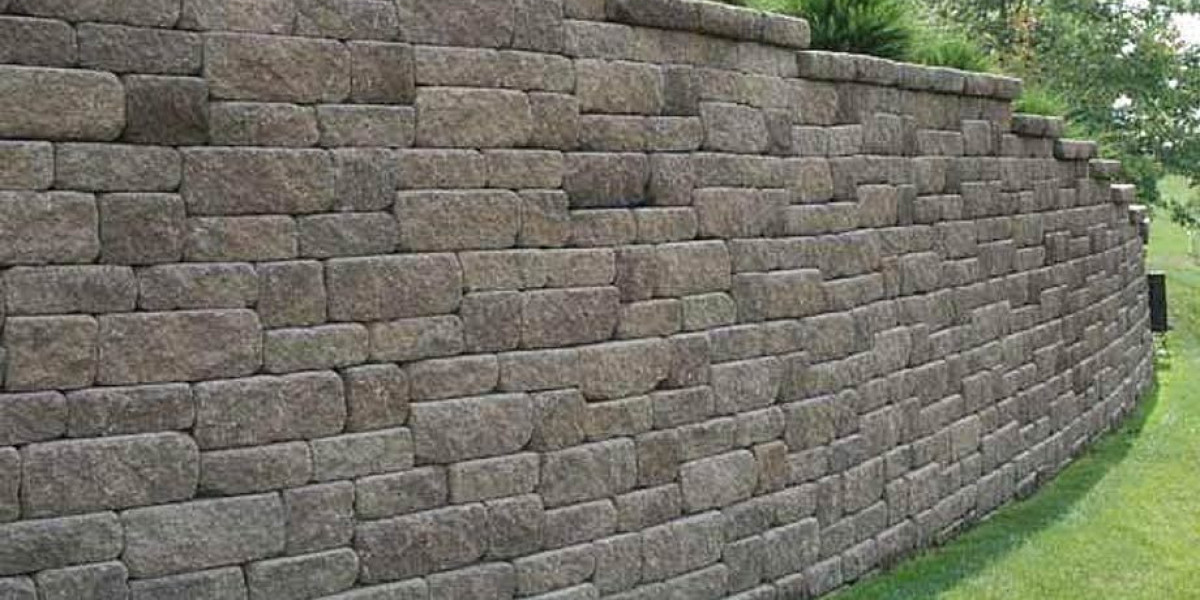Ductwork replacement involves updating the network of air ducts responsible for distributing heated or cooled air throughout your home. Over time, ductwork can deteriorate due to wear, exposure to moisture, or damage from pests. Poorly maintained or outdated ducts can lead to uneven airflow, higher energy usage, and compromised indoor air quality. Modern duct systems are designed to improve energy efficiency and provide consistent comfort, making replacement a worthwhile investment for many homeowners.
By replacing damaged or inefficient ductwork, you can also alleviate strain on your HVAC system, helping it perform more effectively. The process requires careful planning, as the materials and layout of the duct system play a critical role in its overall performance. Factors such as the size of your home, the type of insulation, and proper sealing must be taken into account during replacement. Addressing these elements ensures a functional and efficient air distribution system for your home.
Signs You Need to Replace Your Ductwork
Over time, ductwork can develop issues that impact the comfort and efficiency of your home. A noticeable increase in energy bills is often a sign of inefficiency within the duct system, as the HVAC system must work harder to maintain desired temperatures. Additionally, rooms that feel stuffy or have inconsistent temperatures may point to poor airflow caused by leaks, blockages, or damage. If you hear unusual noises, such as rattling or whistling, these could indicate gaps or loose connections within the ducts.
Persistent dust accumulation, even after cleaning, may be a result of compromised ductwork allowing dirt and debris to circulate. Older duct systems, especially those exceeding their lifespan of 10-15 years, are more prone to wear and tear, which can result in weakened joints and air leaks. It is also worth inspecting your ducts if you notice a decline in indoor air quality, as deteriorating materials or gaps can allow pollutants to enter the system.
Preparing for Ductwork Repairs
Before undertaking ductwork repairs, it is essential to evaluate the current condition of your system to determine the extent of the work required. Begin by conducting a thorough inspection to identify leaks, loose connections, or areas of visible damage. Consider the layout of your home and whether modifications are necessary to optimise airflow or accommodate structural changes. Gather the necessary tools and materials in advance, including duct tape, sealants, and replacement sections, to streamline the process.
Ensure all measurements are accurate to avoid complications during installation. For older systems, assess whether repairing individual components will suffice or if a complete replacement is more cost-effective in the long term. Check local building regulations to confirm compliance with standards, particularly if modifications are planned. Make note of any potential obstacles, such as limited access to crawl spaces or tight corners, which could complicate repairs. Carefully planning each step can help reduce disruptions and ensure a smoother process overall.
Choosing the Right Materials for Your Ductwork
When selecting materials for your ductwork, it is important to evaluate the specific needs of your home and HVAC system. Metal ducts, such as galvanised steel, offer excellent durability and are ideal for long-term use, while aluminium provides a lighter alternative that is easier to handle during installation. Flexible ducting, often made from plastic and metal wire, is useful for navigating tight or awkward spaces but may be less robust than rigid options.
Fibreglass-lined ductwork can enhance thermal insulation and reduce noise levels, though it requires careful handling due to potential health concerns associated with fibreglass particles. Consider whether the material can withstand moisture and temperature changes to prevent corrosion or degradation over time. Additionally, proper insulation should be factored in, as it directly impacts energy efficiency and airflow consistency. Ensure that your chosen material is compatible with local building codes and regulations, particularly if you are upgrading an older system.
DIY vs Professional Duct work Replacement
Choosing between DIY and professional duct work replacement depends on your skill level, time availability, and the complexity of the job. A DIY approach may appeal to those with previous experience in home improvement projects, as it offers the potential to save on labour costs. However, it requires the right tools, precise measurements, and a thorough understanding of ductwork systems. Mistakes such as poor sealing or incorrect installation can lead to inefficiencies and costly repairs later.
When Should You Opt for Professional Installation?
Professional installation is recommended for more complex systems, homes with unique layouts, or when significant structural changes are necessary. Professionals are trained to navigate challenges, such as limited crawl space access or integrating modern materials with older systems. They also ensure compliance with building regulations and guarantee proper sealing and insulation, which are critical for efficiency. While professional services come with higher upfront costs, their expertise minimises the risk of future issues, ensuring a well-functioning system.
Step-by-Step Guide to Replacing Ductwork
Begin by removing any obstacles in the workspace to ensure clear access to the existing ductwork. Carefully disconnect the old duct sections, loosening screws or fastenings and cutting away old sealants if necessary. Measure the dimensions of the removed sections, ensuring the new materials match the required specifications for a precise fit. Cut the new ductwork using appropriate tools, such as tin snips or a saw for metal ducts, and smooth any sharp edges to prevent injuries during installation.
Fit the new sections together securely, using screws, clamps, or duct connectors as needed, and ensure all joints are sealed with duct mastic or tape to prevent air leaks. Check that all sections are properly supported with hangers or brackets to avoid sagging or disconnection. Once the installation is complete, reconnect the ductwork to the HVAC system and perform a test run to identify any airflow issues or potential areas requiring further adjustment.
Safety Precautions During Duct work Replacement
Wearing appropriate safety gear, including gloves and safety goggles, is essential to protect yourself during duct work replacement. Avoid using damaged tools, as these may cause accidents or compromise the quality of your work. Use a sturdy ladder if reaching elevated sections of ductwork and ensure it is placed on a stable surface. If your project involves working in confined spaces, maintain proper airflow to prevent discomfort or overheating.
Be cautious when working near electrical wires and turn off power to affected areas to avoid shocks or fire hazards. Use tools like tin snips or saws with care to minimise the risk of injury, and always handle sharp edges of metal ducts with caution. When removing old materials, avoid excessive force to prevent damage to surrounding structures. If cutting or altering materials that produce fine dust, such as fibreglass, wear a dust mask to prevent inhalation. Ensure the workspace is well-lit to reduce the likelihood of mistakes or accidents.
Inspecting the Quality of New Ductwork Installation
After installing your new ductwork, ensure all components are aligned correctly and securely fastened. Check that the ducts are adequately supported to prevent sagging or disconnection, especially in areas where longer sections are installed. Use a smoke pencil or an incense stick to identify potential leaks by observing if smoke is drawn into any gaps along the seams or joints.
Confirm that insulation is properly fitted, with no visible tears or areas left exposed, as this can significantly impact energy efficiency. Inspect the connections to the HVAC system to verify they are airtight and that transitions between different materials, if used, are well-sealed. Pay close attention to areas where ducts pass through walls, floors, or ceilings to ensure they are not causing unnecessary air loss or interfering with structural elements. Test airflow in individual rooms by comparing vent output to confirm even distribution throughout the property. Rectify any deficiencies promptly to maintain optimal performance.
Regular Maintenance for New Ductwork
To ensure your new ductwork continues to perform efficiently, it’s vital to monitor it for any developing issues. Regularly check for visible signs of wear, such as small gaps or loose connections, which can lead to air leaks if left unaddressed. Pay attention to unusual noises or inconsistent airflow from vents, as these could indicate underlying problems within the system. Periodically clean your ductwork to prevent dust, mould, and debris build-up, which can negatively affect air quality and airflow.
Inspect the insulation surrounding the ducts to confirm it remains intact and provides adequate thermal protection. If your home has a high level of humidity or you suspect moisture infiltration, check for signs of rust or water damage, as these can compromise the integrity of the materials. Additionally, schedule professional inspections as needed to assess areas that are difficult to access, such as hidden or elevated sections, ensuring every part of the system remains in optimal condition.
Cost Implications of Duct work Replacement
The expense of duct work replacement depends on various factors, including the complexity of the system, the type of materials selected, and whether modifications to the existing layout are required. Homes with intricate designs or difficult-to-access areas may incur higher labour costs, as more time and expertise are needed.
Material choice also plays a significant role in cost variations, with options such as galvanised steel or fibreglass-lined ducts typically being more expensive than flexible ducting. Unexpected issues, such as discovering extensive damage or non-compliance with building regulations, can lead to additional charges. It is advisable to obtain multiple quotes from reputable professionals to compare prices and ensure transparency regarding costs.
If hiring professionals, inquire whether the price includes necessary sealing, insulation, or removal of old ductwork. For those pursuing a DIY approach, factor in the cost of tools, sealants, and replacement sections. Budgeting for regular maintenance after installation can also help extend the lifespan of your investment.
The Environmental Impact of Efficient Ductwork
1. Reduces Energy Consumption in Homes and Buildings
Efficient ductwork minimizes air leaks and maintains consistent airflow, reducing the energy needed to heat or cool a space. This lower energy usage leads to decreased demand on power plants, resulting in reduced greenhouse gas emissions and a smaller carbon footprint.
2. Supports the Use of Eco-Friendly HVAC Systems
Well-designed duct systems work seamlessly with energy-efficient HVAC units, allowing these systems to operate at their highest efficiency levels. This synergy maximizes performance while minimizing environmental impact, helping homes and businesses meet sustainability goals.
3. Decreases the Need for Frequent Repairs and Replacements
Poorly installed or aging ductwork can cause systems to work harder, leading to more frequent breakdowns. Efficient ductwork extends the life of HVAC equipment, reducing waste and the environmental burden of manufacturing, transporting, and disposing of replacement units.
4. Improves Indoor Air Quality Naturally
Efficient ductwork helps prevent contaminants like dust, mold, and allergens from circulating through indoor spaces. By maintaining better air quality without relying heavily on electronic air purifiers, it contributes to a healthier environment with less energy usage.
5. Lowers Carbon Emissions Across the Board
When duct systems operate efficiently, they require less electricity or fuel to maintain comfortable temperatures. This translates to lower carbon emissions from both residential and commercial buildings, playing a critical role in broader climate change mitigation efforts.
Conclusion
Properly installed and maintained Ductwork Replacement contributes significantly to a comfortable and energy-efficient home. By addressing leaks, ensuring airtight connections, and selecting appropriate materials, you can optimise airflow and reduce energy waste. Opting for materials suited to your environment helps prevent issues such as corrosion or moisture damage, ensuring durability over time. Incorporating thorough inspections during and after installation allows for the early detection of problems, preventing costly repairs later. A balanced approach to this project, whether DIY or professional, prioritises both functionality and safety, delivering long-term improvements to your property. Regular maintenance further ensures your system remains in excellent condition, supporting consistent indoor comfort and air quality. Finally, considering energy-efficient options not only benefits your household but also aligns with broader sustainability goals, contributing to reduced environmental impact and cost savings over the years.
Frequently Asked Questions
1. How long does ductwork usually last?
Most ductwork has a lifespan of 10-15 years, though proper maintenance can extend this.
2. What are common problems with older duct systems?
Older systems often experience leaks, poor insulation, and airflow inconsistencies.
3. Can I insulate my ductwork during replacement?
Yes, insulation improves energy efficiency and helps maintain consistent temperatures.
4. What tools are required for DIY ductwork replacement?
Ductwork Replacement Essential tools include tin snips, a saw, sealants, and a measuring tape.









